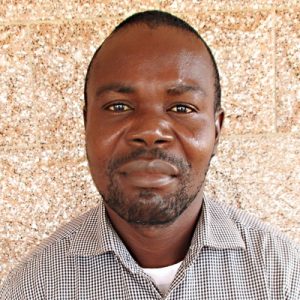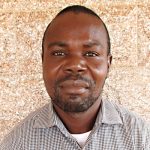"I will be the happiest person when we get a water point that is functional with no shortage of water, all year round," said Alusine, a young teenager and student at Sierra Leone Church Primary School.
The students here fetch water very early in the morning. The provision of water in the classrooms is the responsibility of the head boy and head girl. The two students are responsible for providing water in the various classrooms by using the latecomers for fetching water. Any student who comes to school late is disciplined by bringing water for the respective classrooms and the latrines.
However, the water point for the 309 students is not reliable. The primary water source is located at the school compound, and community members' use of the water point is restricted to limit the pupils' disturbance while in the classroom. But the well is seasonal due to the effects of climate change. When it runs dry, the students are sent off to different parts of the community in search of a safe source.
"I was devastated when the school water point was nonfunctional for an extended period of time due to the lack of proper establishment of a water user committee. I watched as my pupils were subjected to fetch water from different parts of the community," said Headmistress Francess Weekes.
The Catholic Mission of Sierra Leone began the school in 1934, making it the oldest school in the Chiefdom. At the time of its construction, educating girls was quite rare in the area. The school began with a minority of girls, but over the years, the girls' population has surpassed the boys. Many of the original school buildings are still in use today. The community is surrounded by the central police barracks' quarters, airport workers' quarters, churches, and homes.
What We Can Do:
Well Rehabilitation
The well marked for this overhaul is dry for a few months every year and needs major work to supply adequate, clean water to the community year-round. The pump will be removed, and a hand auger will be lowered inside and powered by a drill team. This hand auger will allow the team to drill several meters deeper to hit a sufficient water column to ensure the well supplies water throughout all seasons.
As the team drills, casing will be installed, transforming the bottom of this hand-dug well into a borehole. PVC piping will connect this lower system directly to the pump, a construction that we know will also improve the quality of water.
Once this plan is implemented, everyone within the community will have access to safe drinking water in quality and quantity, even through the dry months.
Hygiene and Sanitation Training
There will be hygiene and sanitation training sessions offered for three days in a row.
After our visit, the hygiene and sanitation trainer decided it would be best to teach community members how to build a tippy tap (a hand-washing station built with a jerrycan, string, and sticks). They will use these tippy taps for handwashing demonstrations and will also teach about other tools like dish racks and the importance of properly penning in animals.
This training will also strengthen the water user committee that manages and maintains this well. They enforce proper behavior and report to us whenever they need our help solving a serious problem, like a pump breakdown.

 Borehole Well and Hand Pump
Borehole Well and Hand Pump
































